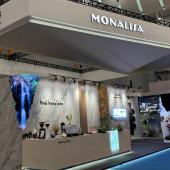Financial Statements analysis of Asian ceramic tile companies

Luca Baraldi, Acimac Research Center, [email protected]
The 3rd edition of “Financial statement analysis of world ceramic tile producers” by ACIMAC Research Department compares the 2015 results of 77 Asian tile companies and further 248 companies, of which 88 from Italy and 75 from Spain.
The analysis of the Asian companies confirms a business model focused on a highly labour-intensive production process to produce medium-low price tiles for highly competitive market segments. The high degree of utilisation of economies of scale and in many cases (in China) district economies allows for the creation of relatively high levels of added value margin, although not at the levels of Italy and Spain. The intensive use of labour and the consequently medium-low level of investments in industrial automation means that this model achieves lower levels of performance in terms of labour productivity. However, this effect is more than offset by the low cost of labour, so the gross profitability margins achieved by Asian companies are on average almost 2 percentage points higher than those of the other main world producers.
Due to low labour costs, Asian companies achieved very high margins in 2015 in all stages of the value chain, despite starting out from a lower level of technological efficiency than Italy or Spain (with the exception of the inventory cycle, which is more efficient and streamlined than the average in Italy and Spain). The result was an EBITDA margin of 13.4%, slightly higher than the level of gross profitability of 2014. However, net profit margins fell by almost 1.5 percentage points in 2015.
ROE, ROI and ROS were almost double those of the two European competitors. Although asset turnover ratio (ATR) remained satisfactory (0.76), it is no longer a distinctive characteristic of Asian companies as it is now on a par with the level observed in Italy and Spain. Moreover, the asset turnover ratio has fallen on average amongst Asian companies, down from the 2014 figure of 0.85.
From the standpoint of economic and financial indicators, it should be stressed that the ratio between equity and borrowing (leverage), cashflow, length of the active cycle and interest coverage margin (low at a sector-wide level) are all far superior to the corresponding values observed in Spain and Italy, although Italian companies have a higher level of interest coverage margin. Asian companies therefore continued to be highly profitable and efficient in 2015, although they tended to operate in the low-cost market segment where neither Spanish nor Italian companies are direct competitors.
Did you find this article useful?
Join the CWW community to receive the most important news from the global ceramic industry every two weeks
























